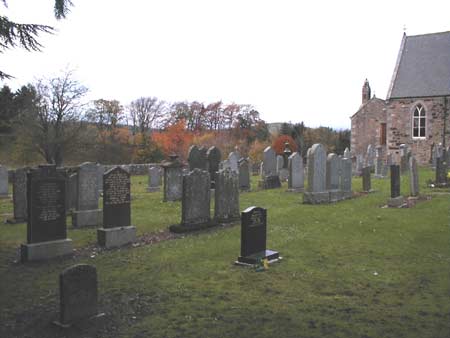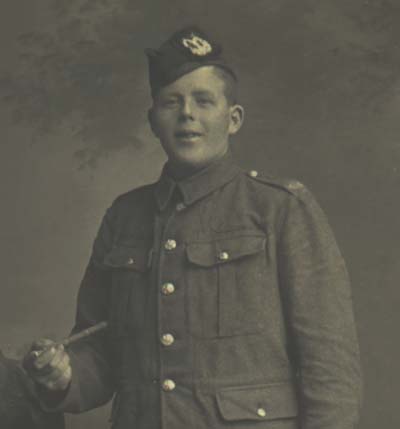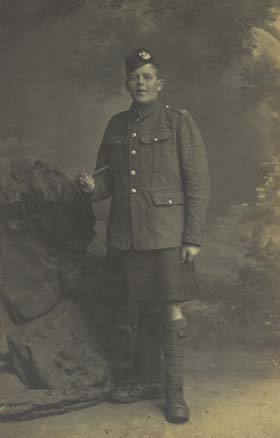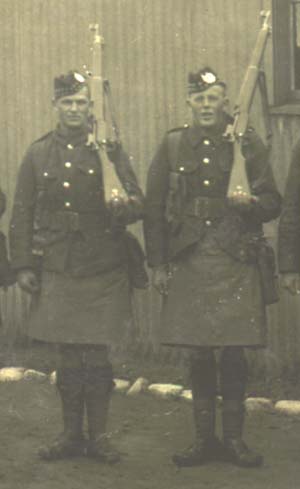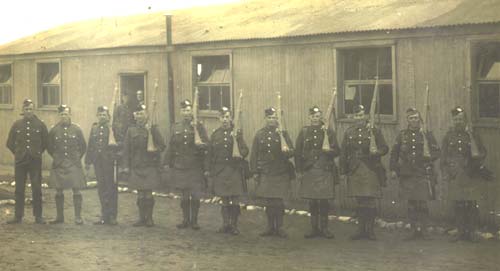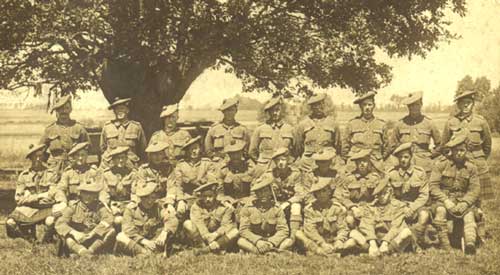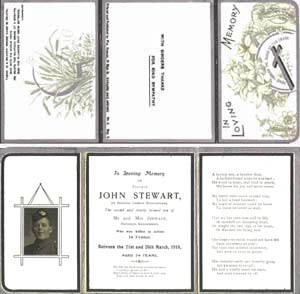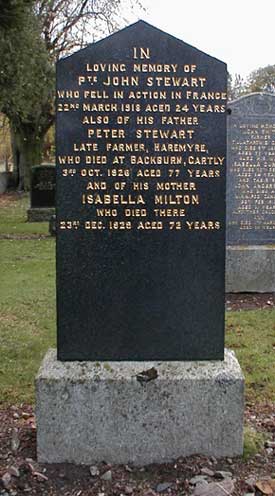John
Stewart was killed in action during the The Battle of Saint
Quentin ( 21st - 26th March ) at the beginning of The German
Spring Offensive ( 21st March - 5th April 1918 ) when the
Germans broke through the British front and overwhelmed the
defenders. Following a short, intense bombardment, three German
armies (70 divisions), 1700 artillery batteries, and 1000
aeroplanes struck along a 45-mile front near Arras. Within
48 hours, the Germans had penetrated 10 miles, the greatest
single day’s advance on the Western Front since 1914.
In
just three weeks the German army overran over 1500 square
miles of territory, including the former Somme battlefields,
a gain unequalled since 1914, before they were finally halted
on 5th April having pushed the front line back 40 miles.
They failed, however, to reach their ultimate objective, Amiens,
with its vital rail links to the Channel Ports, Paris and
beyond. This ultimately meant that Germany could not win the
war.
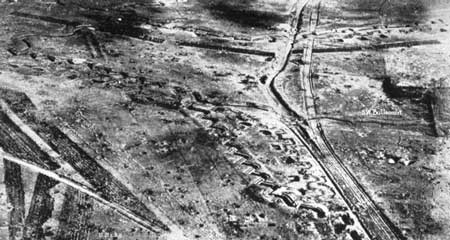
A section
of the Hindenburg Line to the north of Morchies
From the Battalion War Diary it is known that at the opening
of this action 7GH in the 51st Highland Division were in Brigade
Reserve at London Camp, Beugny to the south east of Arras.
At 5.10am on 21st March the enemy began to shell Beugny heavily
and it was observed that the whole of the forward area was
being very heavily bombarded. The men were ordered to "Stand
To" as, due to the large amount of enemy movement the
previous day in and behind the enemies lines, a hostile attack
appeared imminent. At about 6am orders were received to be
ready to move forward at a moments notice.

Area
of front line held by the 7th Gordons on 21st - 22nd March
1918
At
7.54am the battalion started to move, with few casualties,
to the front
line trench a mile further forward astride the Bapaume - Cambrai
road between Morchies and Beaumetz. Enemy activity was observed
all day and scouts seen close to the wire. It became quieter
in the early evening and all companies were issued with rations.
At 9.30pm a pocket of the enemy was discovered and driven
out. It was relatively quiet during the night.
The
morning of John's death began with the ground covered in a
thick mist, under cover of which, the enemy tried to cut the
wire. When the fog lifted around 10.30am large numbers of
the enemy were shot and further concentration was prevented
by Machine Gun and Rifle Grenade fire.
By
4pm the Germans had made four attempts to advance but on each
occasion had been driven back with heavy losses. At 6pm another
strong attack , assisted by 30 aeroplanes, broke through the
line north of Morchies.
At
midnight the battalion were ordered to withdraw to Middlesex
Camp ( 3 miles to the rear ) at Fremicourt.
During the morning of 23rd March the remnants of the battalion
collected there - 8 Officers and 100 Other Ranks.
John
has no known grave. His is one of the 35,000 names recorded
on The Arras Memorial to the Missing.
Three more men from Kennethmont fell in the same area and
also have no known grave.
James
Leith, Piperwell fell during the initial assault on 21
March. His name is recorded alongside his Machine Gun Corps
comrades on The Memorial to the Missing at Pozieres
Also
recorded at Arras are John's neighbours Alexander
Pirie from Braefolds and Robert
Anderson from Mains of Craighall. Alex fell on 25th March,
while serving with the 6th Gordons. Robert with the 1st Gordons
fell on 17th June 1917.
